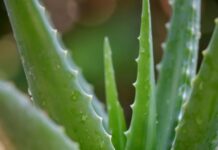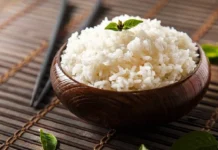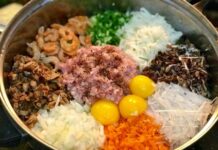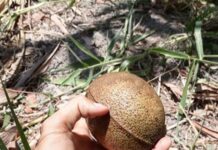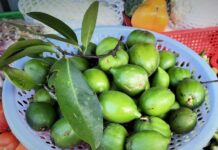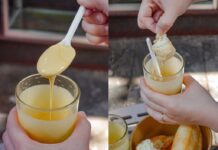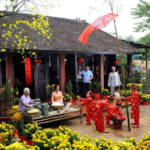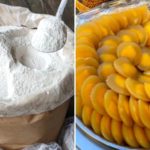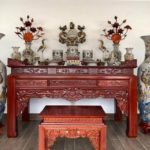As the end of the year approaches and the Lunar New Year is just a few days away, most families gather together to wrap and cook “banh chung” – a traditional Vietnamese cake. It is a meaningful and warm moment that spreads throughout the Tet holiday.
Although “banh chung” is a traditional dish, not everyone knows how to wrap the cake beautifully and cook it evenly. Here are some tips to make the dish perfect.
Choosing and soaking glutinous rice
Choose glutinous rice for “banh chung” that is golden in color, with evenly shaped, shiny, fragrant grains. If you can’t find golden glutinous rice, you can choose black glutinous rice or Dien Bien sticky rice, which are also fragrant and soft. The key to choosing good glutinous rice is to look for white, round, shiny grains with a fresh glutinous rice scent.
Wash the glutinous rice 3-4 times to remove impurities, then soak it in cold water for about 6 hours until it absorbs enough water. After that, drain the water and rinse the rice until the water is clear. Then, mix it with a pinch of salt to enhance the flavor. This is the secret to prevent the cake from being sour and spoiling over time. In some rural areas, to give the cake a natural green color, people wash and crush pandan leaves, then mix them with the rice. This folk method makes the cake more fragrant, and when cooked, it will have a beautiful green color.

Secrets to wrapping and cooking delicious and non-sticky “banh chung”.
Choosing and washing dong leaves
For wrapping “banh chung,” choose tẻ leaves – these leaves are not too young but not too old, so they are shiny, beautiful, and soft, making it easy to wrap the cake.
In terms of size, choose leaves that are evenly-sized, with small stems. Choose leaves that are intact, not torn or damaged, and have a dark green color to make the cake more fragrant and beautiful.
Before wrapping, blanch the leaves in boiling water so they become soft and pliable, making it easy to wrap. Furthermore, blanching the leaves also helps to clean them and make the cake last longer.
Separate the larger leaves to be used for the outer wrapping, and use the smaller leaves for the inner lining. Use a sharp, thin knife to remove the hard central stem of each leaf. Keep the leaf stems for lining the bottom of the pot when cooking the cake to prevent it from sticking.
Split bamboo strips
The best bamboo strips for wrapping “banh chung” are split bamboo strips from the giang tree, a type of thin and flexible bamboo that helps tightly tie the cake. Splitting the bamboo strips requires meticulousness and precision – if they are too thin, they will be too soft, and if they are too thick, they will be too hard. If you don’t have bamboo strips, you can use split banana leaves instead.
Filling the cake
The traditional filling for “banh chung” and “banh tet” is made of mung beans and fatty pork. In some regions, there are variations with different fillings, such as “banh chung” filled with pond loach fish by the Tày, Nùng, and Dao ethnic groups in the northern provinces. There are also “banh tet” filled with bananas, purple sticky rice, or ashes…
For the mung bean filling, choose mung beans with the husk still on as they are more aromatic. Soak the mung beans in water for 6 hours, then remove the husks, and rinse them until the water is clear. Drain the beans and mix them with a little salt to enhance the flavor. Avoid using husked mung beans as they will have less aroma. Depending on the region and family preference, the mung beans can be used raw or cooked and mashed before filling the cakes.
For the meat filling, choose fatty pork with a little lean meat or pork belly with lots of fat to prevent the cake from drying out. Clean and cut the meat into large, thin slices, then marinate them with a little salt and black pepper. Avoid marinating the meat with fish sauce or dried shallots, as fish sauce can make the cake sour if left for too long, and dried shallots can mask the aroma of the mung beans.
Wrapping the cake
“Banh chung” can be wrapped by hand or using a mold. It is important to wrap the cake tightly and with multiple leaves to ensure a firm and well-shaped cake. If wrapping by hand, usually one leaf is placed vertically and another leaf is placed horizontally, with a minimum of 4-6 leaves being the most beautiful. The older and bigger leaves should be placed on the outside to maintain a beautiful green color when cooked. The extra parts of the leaves should be tucked in when cutting the cake to ensure aesthetic appearance.
Cooking the cake
As for the pot: In the past, when cooking many cakes, people used barrels or round matted baskets placed tightly over the cakes. Some people believe that cooking the cakes in copper, stainless steel, cast iron, or tin pots will result in a greener color. Others prefer using thick Haiphong aluminum pots, which ensure even heat distribution. Before placing the cakes in the pot, line the bottom with leaf stems and the extra leaves to prevent the cake from sticking to the pot and to enhance the fragrance of the cake.
Regarding the water and adding water: After placing the cakes in the pot, start by pouring cold water, and then cook. In some rural villages, when cooking many cakes, people often place a Soviet aluminum basin on top of the pot or a large aluminum teapot nearby to add water when it is running low. Avoid adding cold water, as it can make the cakes sticky and hard if left for a long time.
Regarding heat: It is important to maintain a stable and even heat for the cakes to cook properly. The cakes should be fully submerged in water, and the fire should be kept on a medium heat.

Secrets to wrapping and cooking delicious and non-sticky “banh chung”.
Regarding cooking time: The cooking time depends on the weight of each cake. If the cakes are small and weigh less than 1 kg, they usually need 10-12 hours to cook. For larger cakes weighing 2.5 kg or more, the cooking time should be around 14-16 hours.
After cooking, rinse and press the cakes: Rinse the cakes with cold water to remove any stickiness on the surface, then drain them. Place two dishes, one at the bottom and one on top, and use heavy objects like grinding stones or large water containers to press the cakes.
Source: Đời sống pháp luật

